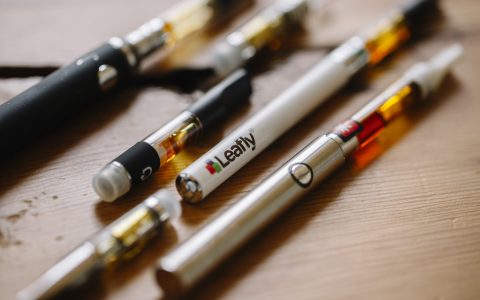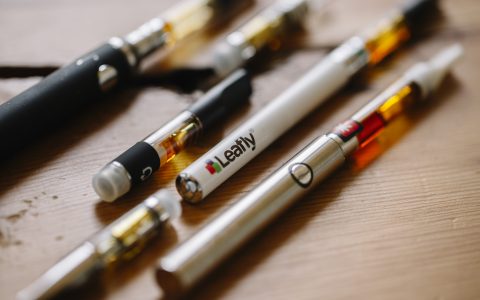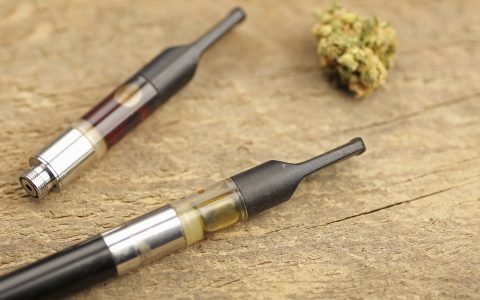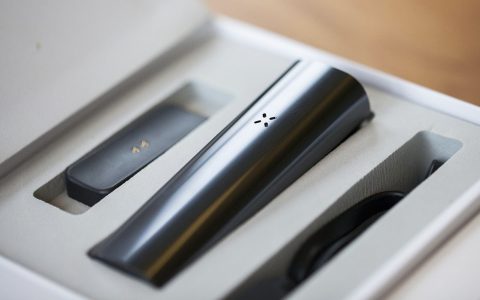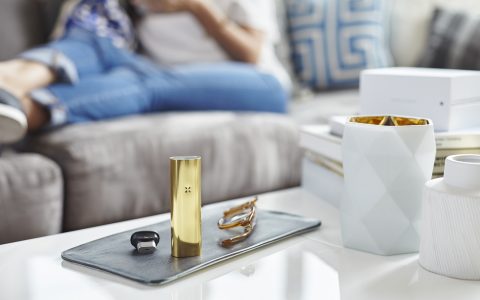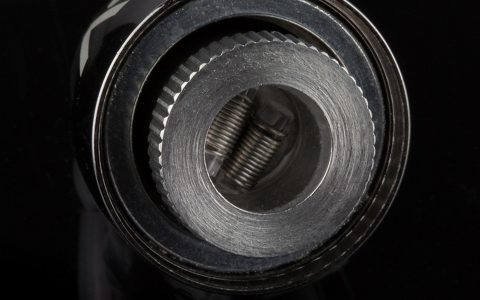The market for cannabis concentrates in the United States is on fire—well, not literally, because fire leads to combustion, and combustion leads to smoke (instead of vapor).
But it’s figuratively on fire, as evidenced by a report from Arcview Market Research that shows almost $3 billion in legal concentrate sales in 2018—a 49% increase over the previous year. By 2022, researchers estimate annual sales will reach $8.4 billion, putting concentrates roughly on par with smokable flowers.
What if everything about your vape game—from the pen itself to the oil inside—is fake?
As a catch-all term, concentrates can mean everything from BHO to rosin to distillate to hash, but according to the same report, 58% of concentrate spending last year came in the form of pre-filled cartridges designed to work in vape pens.
Consumers have been gravitating to vape pens because they’re portable, easy to use, easy to self-titrate, and potent, with THC levels of 70% or higher.
But what if this ubiquitous symbol of the cannabis legalization era has a dark side? What if everything about your vape game—from the pen itself to the oil inside—is fake?
Heavy Metal
While it’s undeniable that vape pens deliver discretion and important safety benefits, questions do remain about what exactly is inside those cartridges (popularly known as carts). A recent report by Leafly’s David Downs, California Cannabis Labs Are Finding Toxic Metal in Vape Carts, has raised concerns within the cannabis industry, among regulators and for consumers.
Since January 1 in California, all legal cannabis vape carts are subject to stringent new testing for heavy metals. At SC Labs, founder Josh Wurzer reports that about 0.5% of the vape cart batches he’s tested have failed for lead. “We’ve seen some issue,” he said. “Out of the thousands we’ve tested, we’ve had a very small portion over the limit.”
The specter of inhaling heavy metal vapor into your lungs should be of serious concern to anyone who has chosen vape pens as a healthier alternative to smoking flower. But it’s also important to recognize that we only know about this potential hazard because California’s new regulations are working as intended.
Vape pens (along with all other cannabis products) get tested in an accredited lab where standards are rigorous, and anything that fails for contaminants of any kind gets pulled from the supply chain before it reaches dispensary shelves.
But what if you’re not buying your vape carts at a licensed dispensary, because you don’t live in a place with legal cannabis, or you get a better deal on them off-the-books from a guy at your gym? A vape cart is a vape cart is a vape cart—right?
Sure, unless your vape cart is counterfeit.
It’s Not Just the Carts
Vape pen manufacturers have been aware of a growing counterfeit market for well more than five years, though until recently, there’s been little public discussion of the problem. And it’s not just the cannabis-filled vape cartridges that are getting knocked off. Sometimes it’s the actual pen.
Grenco Science manufactures the G Pen (retail $35 – $125), a leading line of high-end portable vaporizers that boasts celebrity endorsements from Snoop Dogg, Wiz Khalifa, Burton snowboards, and other lifestyle brands.
In 2017, the company was awarded $47 million after suing 65 different online retailers for selling counterfeit versions of their products. They took the legal action not just in hopes of recovering lost revenue and deterring future violations of their trademarks and copyrights, but also to protect consumers from potentially dangerous hardware.
Counterfeit vape pens generally use non-certified batteries and materials, which either function improperly or not at all. If they fail to sufficiently heat, the vapor output will be minimal or nil. If the heating element gets too hot, whatever’s inside the cartridge will combust instead of releasing vapor. Or potentially hazardous materials surrounding the cart could release noxious fumes. Sometimes fake vape pens leak. And there has been multiple instances when they’ve exploded, badly injuring people.
Some people knowingly buy these counterfeits, but most don’t realize they’re getting conned. According to Grenco Science’s complaint:
Many of the unauthorized [retailers] named in the lawsuit are based overseas and go to great lengths to conceal their identities and thwart shutdown. This includes operating under multiple fictitious names, using numerous merchant accounts and illegitimate search engine optimization tactics to drive traffic away from the genuine Grenco Science online store. The defendants often used logos and images directly sourced from Grenco Science to further deceive possible customers.
Nobody Heats Up a Handbag and Inhales
While Grenco (and other vape pen makers) say counterfeiting of pens has been “rampant” since 2013, the thriving illicit market in fake vape carts appears to be a more recent phenomenon.
In a December 2018 article published by Marijuana Business Daily, Hannah Davis, chief marketing officer for Heavy Hitters, a line of disposable cannabis vape cartridges in California, said the company was “alarmed” just a few months prior when they learned that fake Heavy Hitters vape carts were being sold at unlicensed dispensaries in California.
There are unlicensed shops in California selling this product at a lower price. This could be potentially unsafe to consumers … buying it thinking that they’re getting a better deal from these unlicensed shops.
Just like with a knock-off Gucci handbag, counterfeit vape pens cost far less than their authentic counterparts because they’re made on the cheap, out of inferior materials, by companies that don’t pay taxes, don’t have to market or promote their brands, and don’t have to meet any standards whatsoever. The obvious (and ominous) difference is that nobody heats up a handbag and then inhales it deeply into their lungs.
So what’s inside all the fake vape carts currently found at unlicensed dispensaries and on offer from underground dealers in prohibition states? And how do they get them to look so much like the real thing?
Merry Jane’s Zach Harris found the answer on Instagram.
Under usernames like @vapen.cbd.thc, @cartridge_vape_factory, and @dreamervapor01, black market wholesalers are posting photos and videos of endless stacks of empty cartridges and packaging from three successful California-based brands in particular, King Pen, Brass Knuckles, and Heavy Hitters, as well as a number of other, lesser-known vape labels. There are dozens of near-identical pages across the social media site, each one requesting direct messages for order info and listing WhatsApp numbers and Hotmail addresses in their bios.
These unscrupulous online retailers will sell to anyone with money not just empty vape carts, but also all of the packaging material needed to make it look like a real King Pen. Most of these suppliers are located in Shenzhen, China—the same industrial center where legal companies outsource their non-cannabis production runs.
So the physical carts themselves are no different than what’s in the authentic product. And the branding looks so similar, it’s difficult for even the legitimate manufacturers to distinguish the fakes from the real thing.
But when it comes time to fill those cartridges, who knows what’s in them?
All we know for certain is that whatever’s inside a counterfeit vape cart was added by someone who rips off people for a living. And that it won’t be tested for potency, purity, or anything else before you start puffing away. It could be low-grade, pesticide-ridden cannabis oil, or a blend of synthetic cannabinoids, or something even more nefarious.
Manufacturers continue to pursue legal action against bootleggers and constantly update their packaging to stay ahead of fakes, but it’s essentially a game of Whack-a-Mole.
So What’s the Solution?
Consumers in legal states who want vape pens need to buy them from licensed retailers. And those stuck living in prohibition states will just have to wait for legalization to reach them. But no need to break up with your dealer—just stick with flower awhile.
And if you’re worried about getting high discreetly, maybe do like your elders did, and invest in a one-hitter cleverly disguised to look like a harmless tobacco cigarette.

